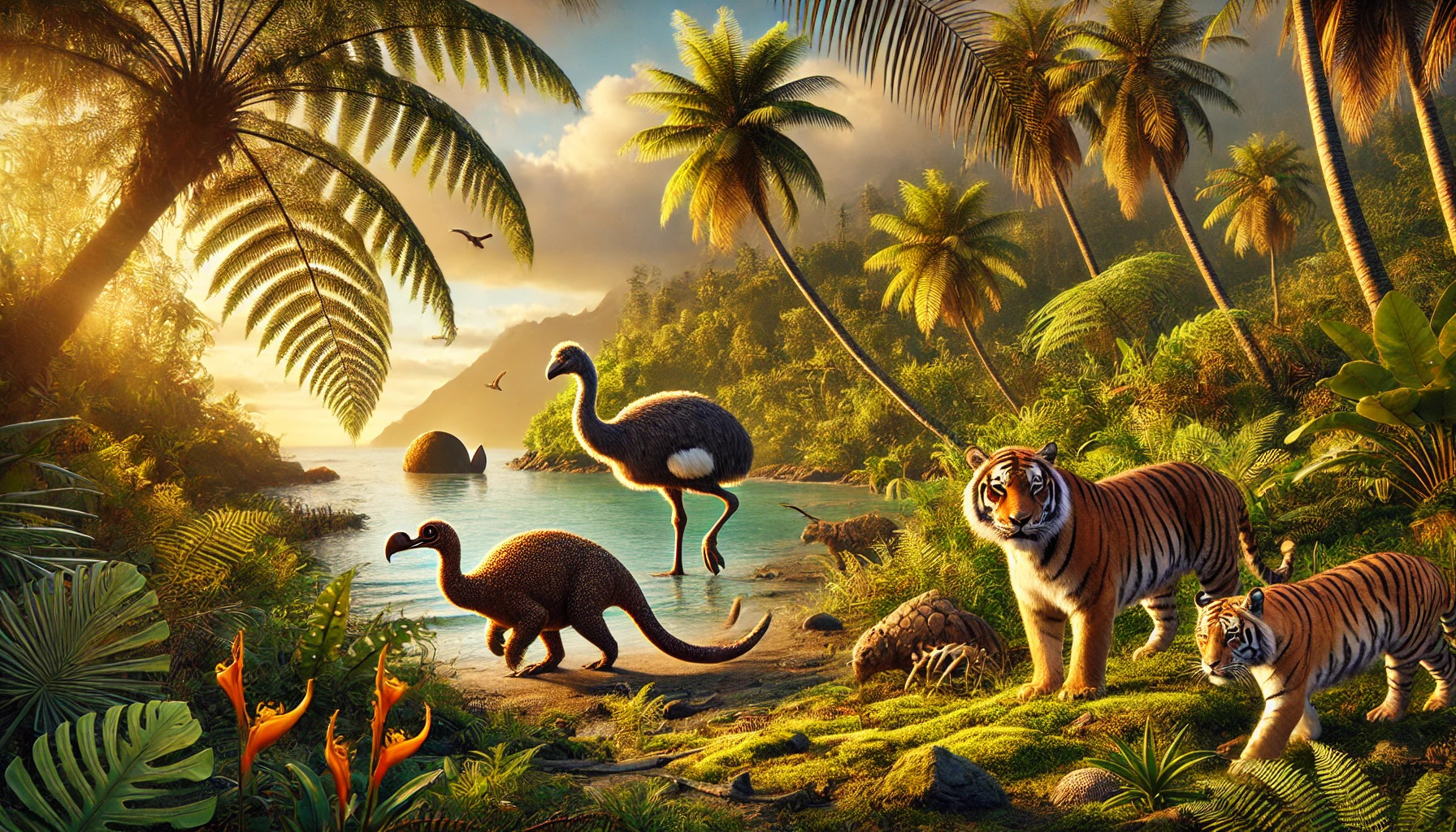Islands are fascinating places, rich in unique species and ecosystems. Their isolation has made them biodiversity hotspots, but this same isolation also contributes to high extinction rates. The history of extinct animals in these areas highlights the fragile balance of these ecosystems and the impact of human activity on island wildlife.
Many island species evolved under specific conditions, leading to remarkable adaptations but also making them vulnerable to changes. Predation by invasive species and habitat loss have played significant roles in driving several island animals to extinction. Understanding this history is vital for protecting the remaining biodiversity and preventing future losses.
As people explore the stories of these extinct animals, they uncover lessons about conservation and the importance of preserving natural habitats. Each extinct species tells a part of the story of how interconnected life on Earth truly is. By delving into the past, they can inspire efforts to safeguard the future of island ecosystems.
Origins of Island Biodiversity
Islands are unique places with rich biodiversity. Their isolation has led to fascinating evolutionary processes that create distinct species found nowhere else.
Geographical Isolation
Geographical isolation is a key factor in the development of island biodiversity. Islands are often cut off from mainland ecosystems, providing a separate environment for species to adapt.
This isolation allows species to evolve without competition or predation from mainland species. Over time, these isolated populations can develop unique traits. For example, the Hawaiian Islands are home to many bird species that are found only there.
The distance between islands and the mainland can also affect which species can reach these areas. Birds, for instance, can fly and establish populations on isolated islands.
Evolutionary Processes
The evolutionary processes on islands are intriguing. When species arrive on an island, they face different challenges than on the mainland. Over generations, these species may adapt to their specific environment.
Natural selection plays a major role in this adaptation. For example, if a species develops a trait that helps it find food, it may thrive and reproduce more than those without that trait.
Islands also encourage speciation, where one species splits into two or more. This is common with animals like the Galápagos finches, which evolved into various species based on their feeding habits.
These processes contribute to the high level of endemism on islands, making them biodiversity hotspots. The unique wildlife on islands highlights the importance of understanding and conserving their fragile ecosystems.
Historic Extinctions in Island Ecosystems
Island ecosystems have faced significant disruption over time, leading to the loss of many unique species. Understanding the historic extinctions in these areas reveals critical patterns and the factors influencing biodiversity.
Notable Island Extinctions
Throughout history, several notable extinctions have occurred on islands. For instance, the Moa in New Zealand was a flightless bird that vanished due to hunting and habitat loss. Another example is the Great Auk, a bird that became extinct in the 19th century due to overhunting.
Islands often have unique species that evolved in isolation. Their loss represents not just the extinction of individual species but also the collapse of entire ecosystems. More than 90% of bird extinctions recorded have happened on islands. This includes species that once thrived in rich ecological niches, which are now silent due to human activities.
Human Impact and Introduced Species
Human activities have profoundly impacted island ecosystems. The introduction of non-native species has been one of the key drivers of extinction. Animals like rats, cats, and goats disrupt local wildlife, often preying on or outcompeting native species.
For instance, goats introduced to some islands have devastated vegetation, leading to habitat loss for many native animals. The IUCN (International Union for Conservation of Nature) reports that human-induced factors have led to more frequent extinctions on islands compared to mainland regions. Efforts to manage and remove these invasive species have become crucial for restoration drives in many locations.
Conservation Efforts
Efforts to conserve island biodiversity focus on protecting unique species and restoring habitats. These actions are crucial in preventing further extinctions and maintaining the ecological balance on islands.
Protection of Endemic Species
Protecting endemic species is vital for maintaining island ecosystems. Many of these species are found nowhere else on Earth, making their survival essential for biodiversity.
Conservationists implement strategies such as creating protected areas and managing invasive species. For example, eradicating invasive mammals reduces competition for resources. This action benefits native birds and reptiles that are often vulnerable to extinction.
Organizations also work on legal protections for endangered species. By raising awareness about the threats these animals face, they help gather support for conservation initiatives.
Restoration Projects
Restoration projects aim to rehabilitate damaged ecosystems on islands. This includes replanting native vegetation and restoring habitats that have been altered by human activities.
Efforts often involve community participation, fostering a sense of ownership and responsibility. Local groups may work to remove invasive plants, allowing native species to thrive again.
Some projects also focus on breeding programs for critically endangered species. These programs can increase population numbers, helping to ensure their survival. By restoring habitats and protecting species, these projects play a significant role in conserving biodiversity on islands.

